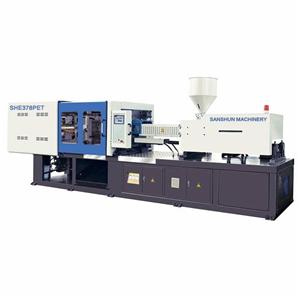- Home
- >
- News & Resources
- >
- Our Blog
- >
- Treatment of turbidity and markings on the surface near the gate
After the melt is injected into the cavity, a thin case is formed on the wall of the mold cavity. When this case is squeezed by the subsequent melt during the filling process, the melt will break.
Once the thin case is torn or moved, the surface of the plastic part will have scratches or wrinkles. For example, on low-density polyethylene plastic parts with a small melt index, alternating light and dark strips can often be seen on the surface, and the resulting position is generally a certain distance from the gate and spread over the entire surface, especially thin Wall plastic parts are most prone to this kind of failure, which is mainly due to the fact that the melt is subjected to greater pressure before filling the small melting cavity, which causes the melt to rupture and form surface defects.
Generally, slowing down the cooling rate of the melt during the filling process and the formation rate of the surface layer is the best way to eliminate this type of failure. This can be eliminated by appropriately increasing the mold temperature or increasing the local temperature of the melt fractured part. malfunction. For local heating of the surface of the mold cavity, small tubular electric heaters installed near the gate and at the melt fracture site can be used to achieve.
The flow characteristics of the melt are related to its rheological properties, and also related to the cross-sectional area of the gate that determines the shear rate of the melt at the entrance of the mold. When the gate size is small, and the injection rate is high, the melt is injected into the cavity in a thin and curved jet state. If the cooling rate of the melt is fast, it will be poorly fused with the irregular flow of the subsequent filling. , Resulting in surface turbidity and markings near the gate. Sometimes, a small amount of cold material will move along the surface of the mold cavity, causing surface turbidity and streaks to be generated far from the gate.
Generally, surface turbidity and markings produced during the injection of crystalline polymers are more difficult to eliminate because the melting temperature of such resins is quite high. Compared with amorphous polymers, crystalline polymers have a faster solidification speed and a narrow processing temperature range. , And the irregular flow of melt produced when the wall thickness changes suddenly and the melt flow direction suddenly changes with the rest of the melt in the cavity for a relatively short time, which is easy to produce surface turbidity and markings.
For troubleshooting of this type of fault, in terms of process operation, the temperature of the mold, barrel, and nozzle should be appropriately increased, and the forward speed of the screw during injection should be reduced.
In terms of mold operation, the gate size should be enlarged, and fan-shaped gates should be preferred. If a tunnel-type gate is used, the top size of the gate is too small, the residual material impurities at the gate will affect the filling of the mold and aggravate the irregular flow of the flow. The top size should be increased appropriately; if the mold is poorly vented, it will also affect the regular flow of the flow material and should be improved. Also, the number of lubricants should be reduced and suitable varieties should be selected.
Generally, surface turbidity and markings produced during the injection of crystalline polymers are more difficult to eliminate because the melting temperature of such resins is quite high. Compared with amorphous polymers, crystalline polymers have a faster solidification speed and a narrow processing temperature range. , And the irregular flow of melt produced when the wall thickness changes suddenly and the melt flow direction suddenly changes with the rest of the melt in the cavity for a relatively short time, which is easy to produce surface turbidity and markings.
For troubleshooting of this type of fault, in terms of process operation, the temperature of the mold, barrel, and nozzle should be appropriately increased, and the forward speed of the screw during injection should be reduced.
In terms of mold operation, the gate size should be enlarged, and fan-shaped gates should be preferred. If a tunnel-type gate is used, the top size of the gate is too small, the residual material impurities at the gate will affect the filling of the mold and aggravate the irregular flow of the flow. The top size should be increased appropriately; if the mold is poorly vented, it will also affect the regular flow of the flow material and should be improved. Also, the number of lubricants should be reduced and suitable varieties should be selected.







